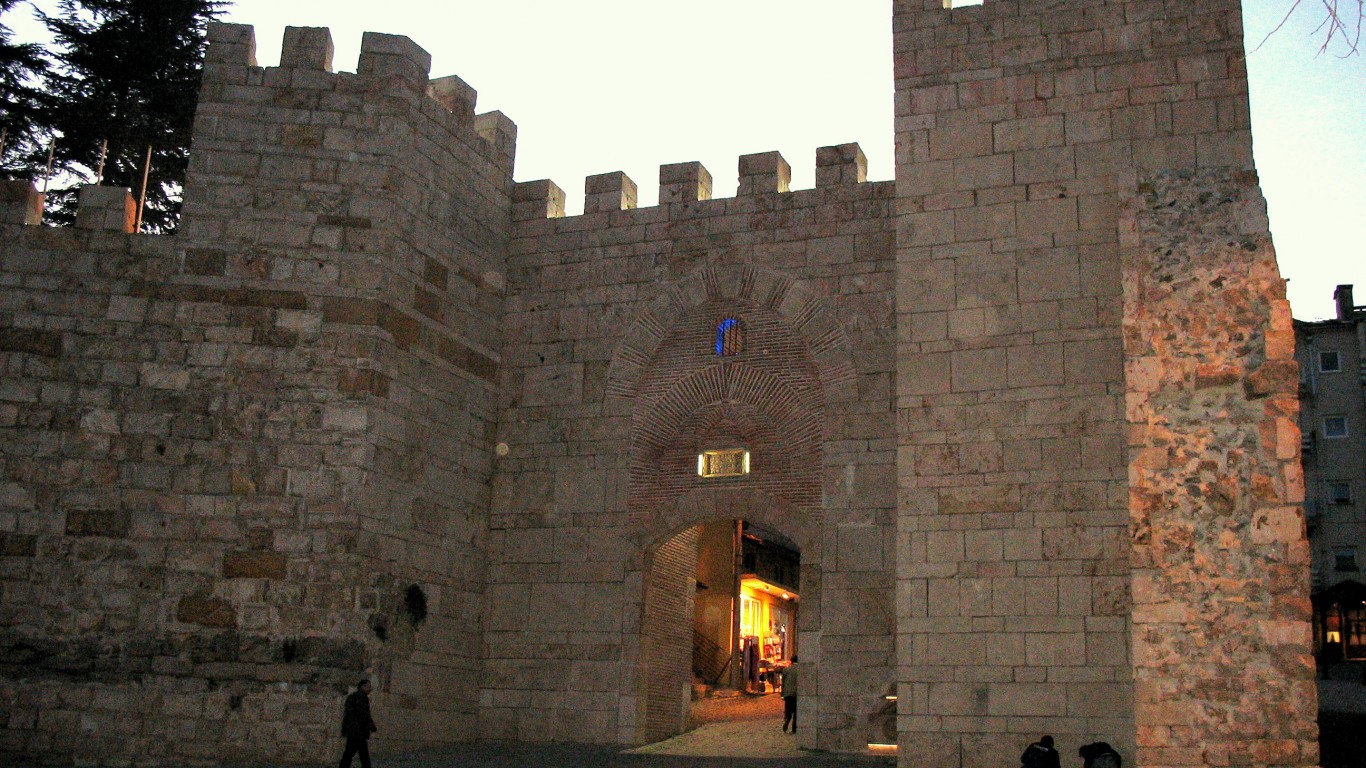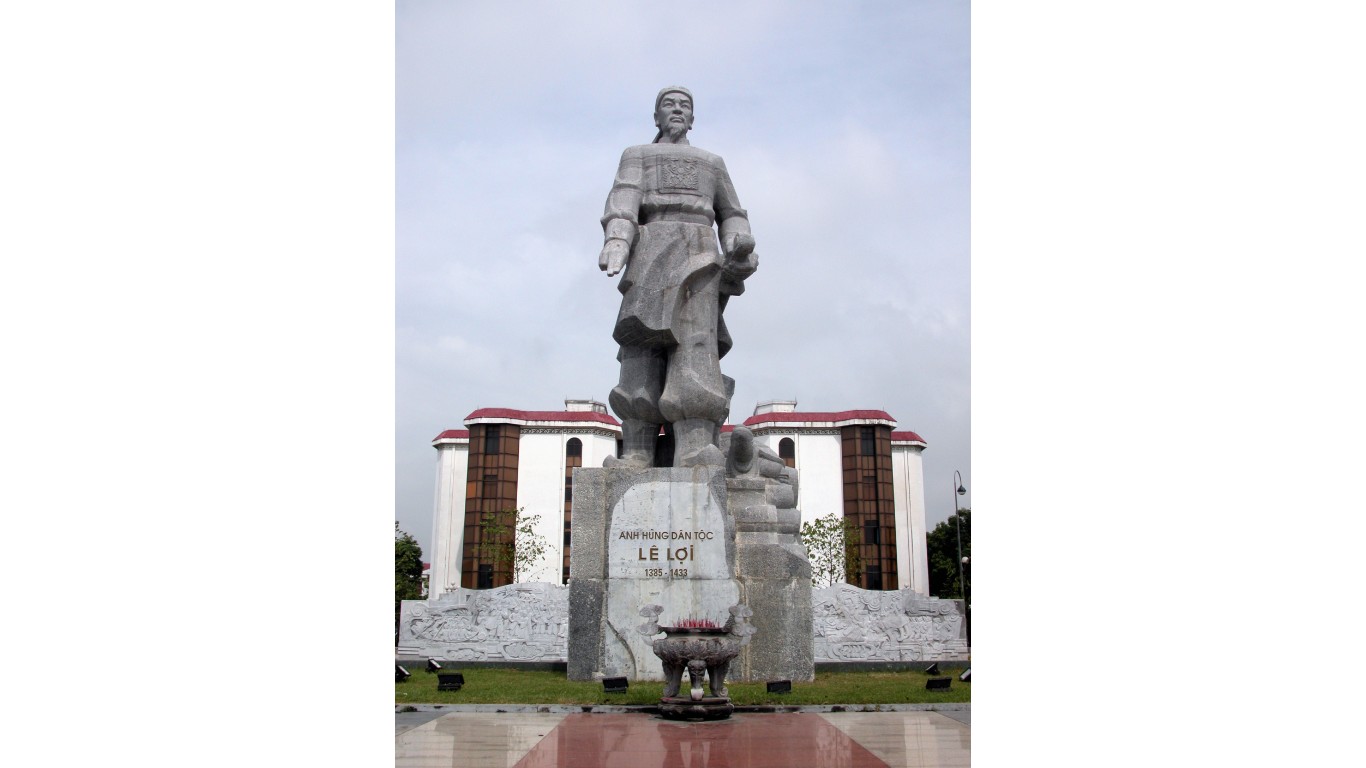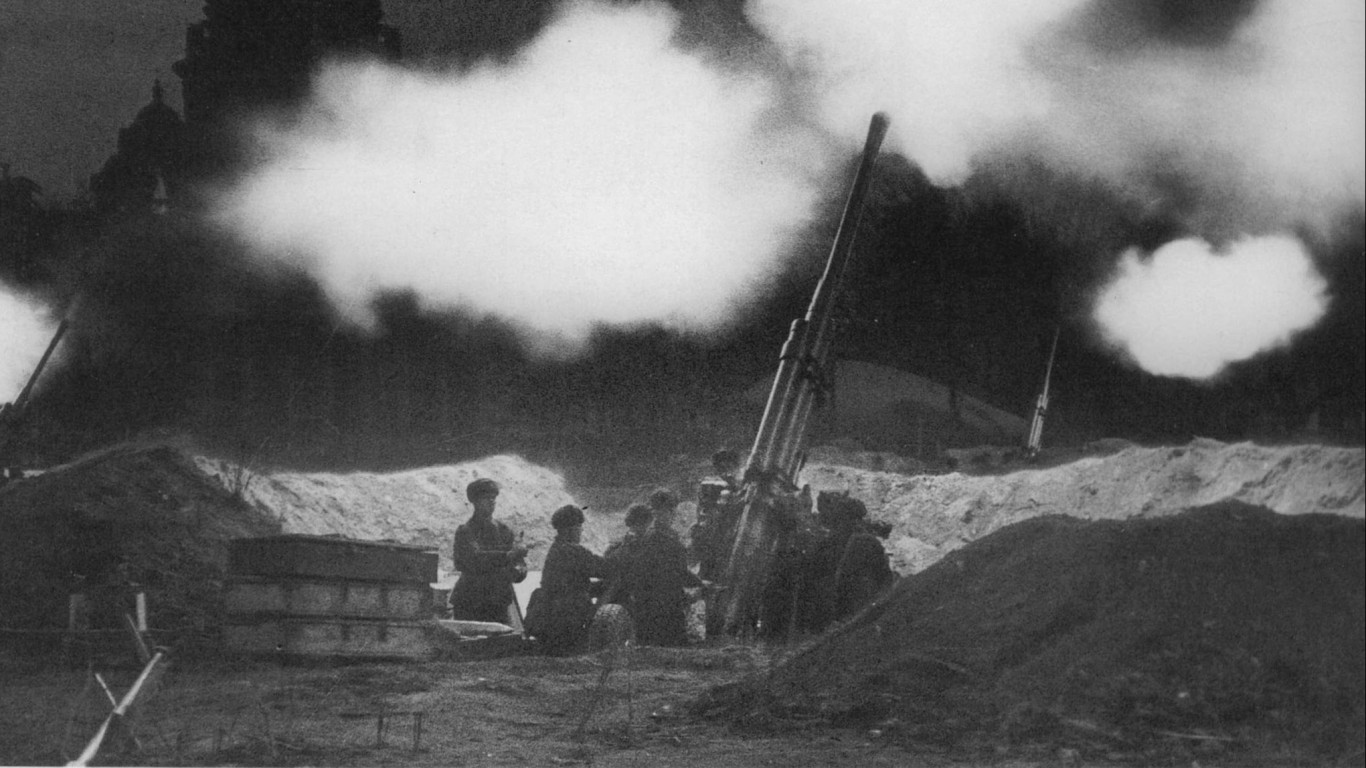
The current Russian invasion of Ukraine has involved several brutal sieges of cities and towns alike. Many civilians have been killed along with members of the military. The most widely followed of these was the siege on Mariupol steel plant. A small number of Ukrainian soldiers held off a much larger Russian military force.
In American history, a siege was a major turning point in the Civil War. The siege of Vicksburg lasted from May 18 to Jul 4, 1863, when Union General Ulysses S. Grant claimed it and blocked the Confederate use of the Mississippi River. The victory split the Confederacy in half, geographically. Although Vicksburg was important, it was a relatively short siege. The longest siege in history was the Siege of Ceuta, which lasted 33 years. (These are the Greatest battles in American history: Revolutionary War, Civil War, WWI, WWII.)
To determine the longest siege in history, 24/7 Wall St. reviewed data from Tony Jaques’ 2006 military encyclopedia “Dictionary of Battles and Sieges: A Guide to 8,500 Battles from Antiquity through the Twenty-first Century” and other sources. Because siege lengths can be inconsistent across sources, we tried to use the same source where possible.
A siege is a military blockade of a city or fortified place that aims to compel it to surrender. Many times, the place under siege, such as Ceuta in North Africa or Candia in Crete, is a strategically important city. Implied in a siege strategy is that the stronghold is too well protected for a direct assault. In almost all cases, the defenders are vastly outnumbered but they are able to hold out because of strong fortifications.
Some armies may know this ahead of time and dig trenches or even plant crops in the area around the besieged place to prepare for a long stay. Insurgents such as the Romans in their war with the Etruscans tunneled underneath the Etruscan city of Veii to break the stalemate. In the later stages of medieval times, the introduction of gunpowder and cannon were crucial to ending sieges by battering thick walls of forts.
The longest siege in history, the Siege of Ceuta, lasted from 1694 to 1727. The Spanish city on the North African coast has been fought over many times because of its strategic position on the Mediterranean Sea and the Atlantic Ocean. The so-called Thirty-Year Siege in the late 17th and early 18th centuries was by Moroccan Moors who fought with the Spanish. (See also, the most pivotal naval battles of all time.)
The Moors were ready for a prolonged siege when it began. They constructed siege weapons and planted crops in the surrounding lands. Though in 1720 a military force arrived and drove off the Moroccan forces, the Moors later returned and conquered Ceuta.
Click here to see the 15 longest sieges in military history
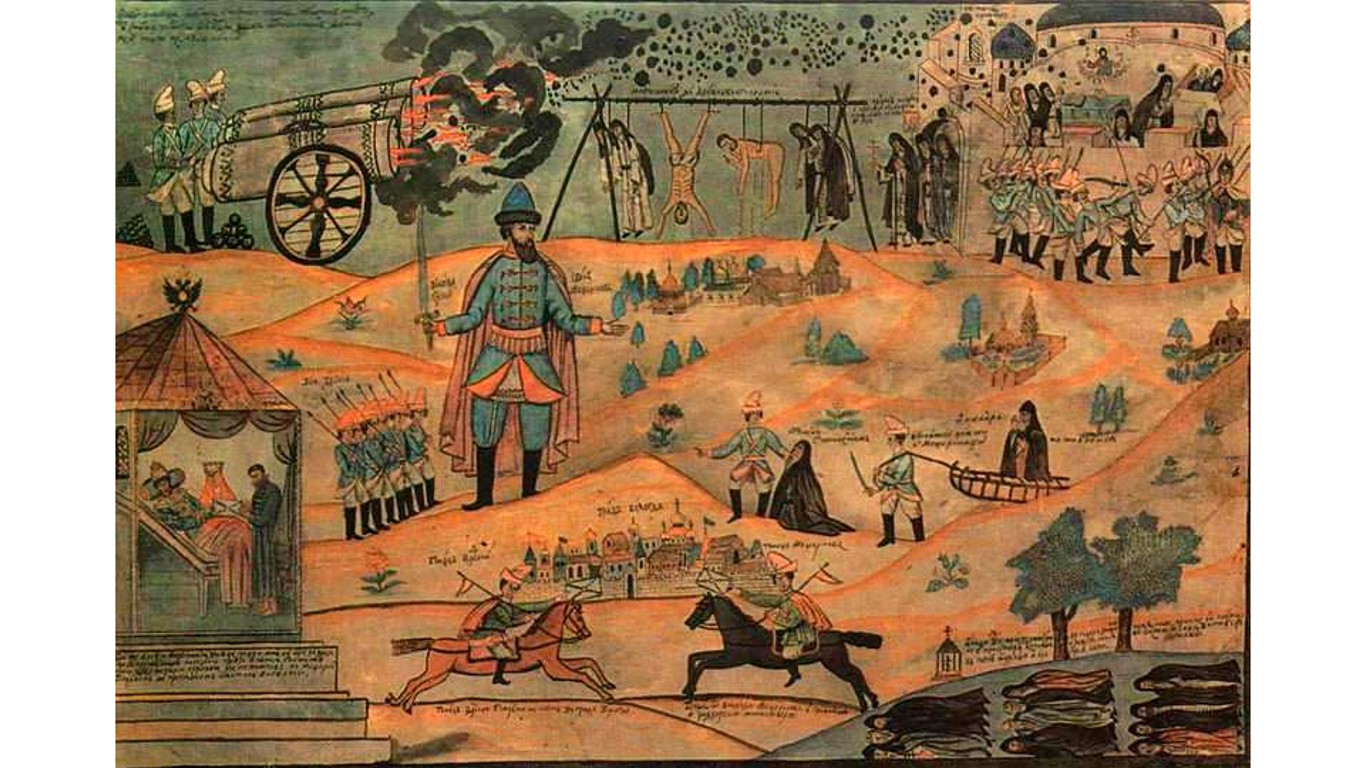
15. Solovetsky Monastery siege
> Length of siege: 8 years
> Dates: 1668 to 1676
The Solovetsky Monastery played a key role in the defense of what would become Russia. A fortress was built there in the late 16th century on the White Sea coast to fend off attacks from the Swedes. The monastery had a strong influence in the region, much to the chagrin of the second Romanov Tsar, Alexey Mikhailovich. He backed religious reforms of the Russian Church that the monastery resisted. The tsar sent the army to suppress the rebels and ended up laying siege to the monastery for eight years. A traitor helped the army prevail, and many monks were executed.
[in-text-ad]

14. Siege of Thessalonica
> Length of siege: 8 years
> Dates: 1422 to 1430
Thessalonica was an important city in Greece in ancient Rome and during the Byzantine Empire, when it was considered the second city behind Constantinople. The city had been in the Ottoman Empire’s hands but was lost to the Byzantine Empire during an Ottoman civil war. The Ottomans wanted it back. They began a siege that lasted eight years and resulted in the loss of 95% of Thessalonica’s population. On March 29, 1430, after a demand to surrender was rejected, the Ottoman army stormed the city and took it within a few hours. They plundered Thessalonica for three days. It stayed in Ottoman hands until 1912 after the Greeks captured it during the Balkan Wars.

13. Siege of Lilybaeum
> Length of siege: 9 years
> Dates: 250 BC to 241 BC
The siege of Lilybaeum, a fortified city in Sicily, occurred during the First Punic War between Carthage and Rome. The Romans wanted to expel the Carthiginians from Sicily and press the war into Libya. In 250 BC, they launched a massive fleet to Lilybaeum, the most powerful Punic military installation left on Sicily. The Romans ran a trench along the fortifications and set upon besieging the city. There were 10,000 Carthaginian troops inside the city, and many of them were mercenaries. All held up during the siege. Carthage repelled attacks by the Romans and burned many of their siege weapons. Following a naval setback, Rome gave up the siege.
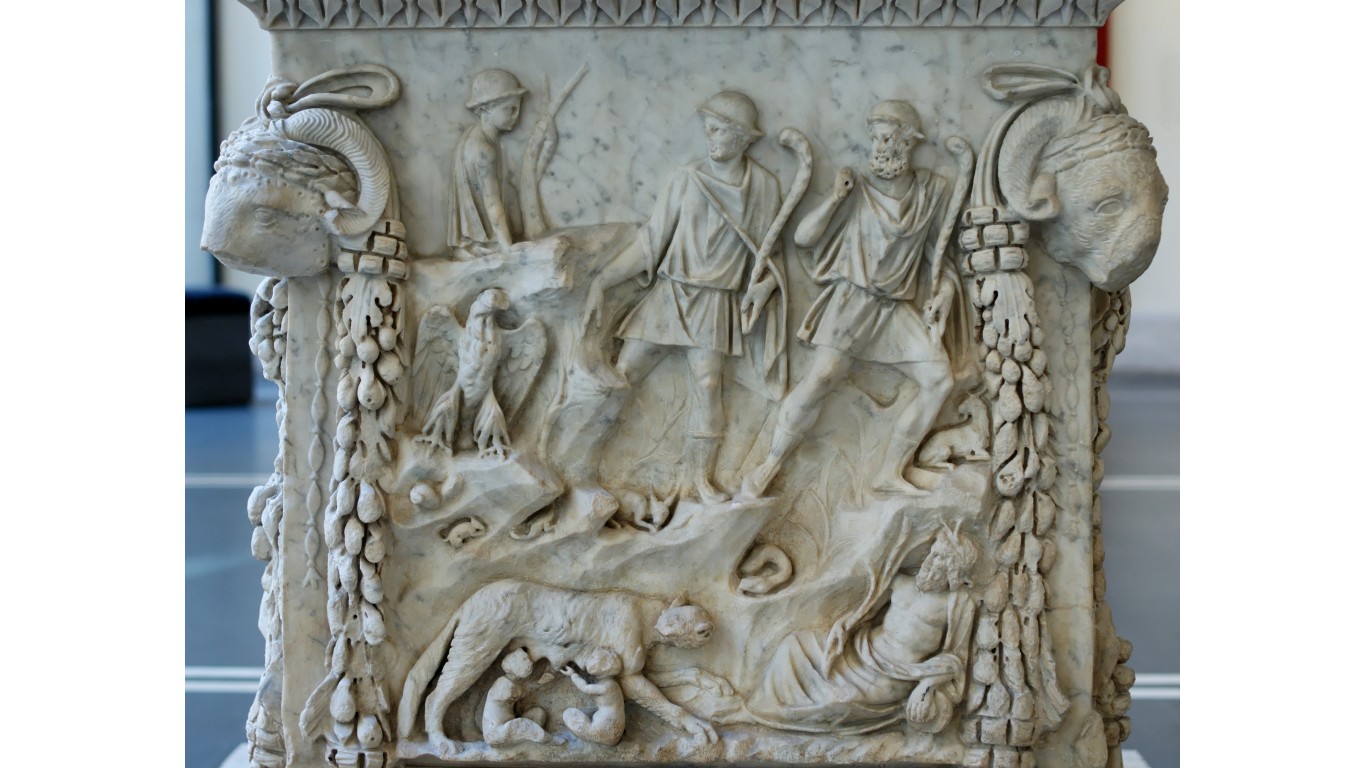
12. Siege of Veii
> Length of siege: 9 years
> Dates: 405 BC to 396 BC
This siege by Rome was against the Etruscan city of Veii and the most significant event of the Third Veientine War. For most of its duration, the siege was little more than a loose blockade of Veii. And Veii was helped by Latin-speaking allies from other cities that feared Rome would turn on them next. That changed when Rome appointed Camillus dictator. He conducted a more focused and organized siege than his predecessors, improving siege works and building more forts around Veii. Camillus ordered a tunnel to be built under Veii and the city fell.
[in-text-ad-2]
11. Siege of Bursa
> Length of siege: 9 years
> Dates: 1317 to 1326
During the Ottoman-Byzantine Wars in the 14th century, the siege of Bursa (also spelled Brusa), near Mount Olympus, took place. Ottoman leader Osman I was expanding his empire’s reach southward and laid siege to Bursa. The city fell after nine years, but it was taken by Osman’s son Orkhan, who told the news of the capture of Bursa to his dying father. Bursa became the Ottoman capital until Adrianople fell in 1362.

10. Siege of Gingee
> Length of siege: 9 years
> Dates: 1689 to 1698
During the Mughal-Maratha Wars in India, Emperor Aurangzeb sent troops to besiege King Rajaram at Gingee, a strong fortress in southeastern India that European travelers dubbed “The Troy of the East.” Aurangzeb’s forces were under constant attack, but he refused to relent. After Rajaram fled Gingee, the Mughals changed commanders and replenished their forces. They finally took the city on Feb. 17, 1698.
[in-text-ad]
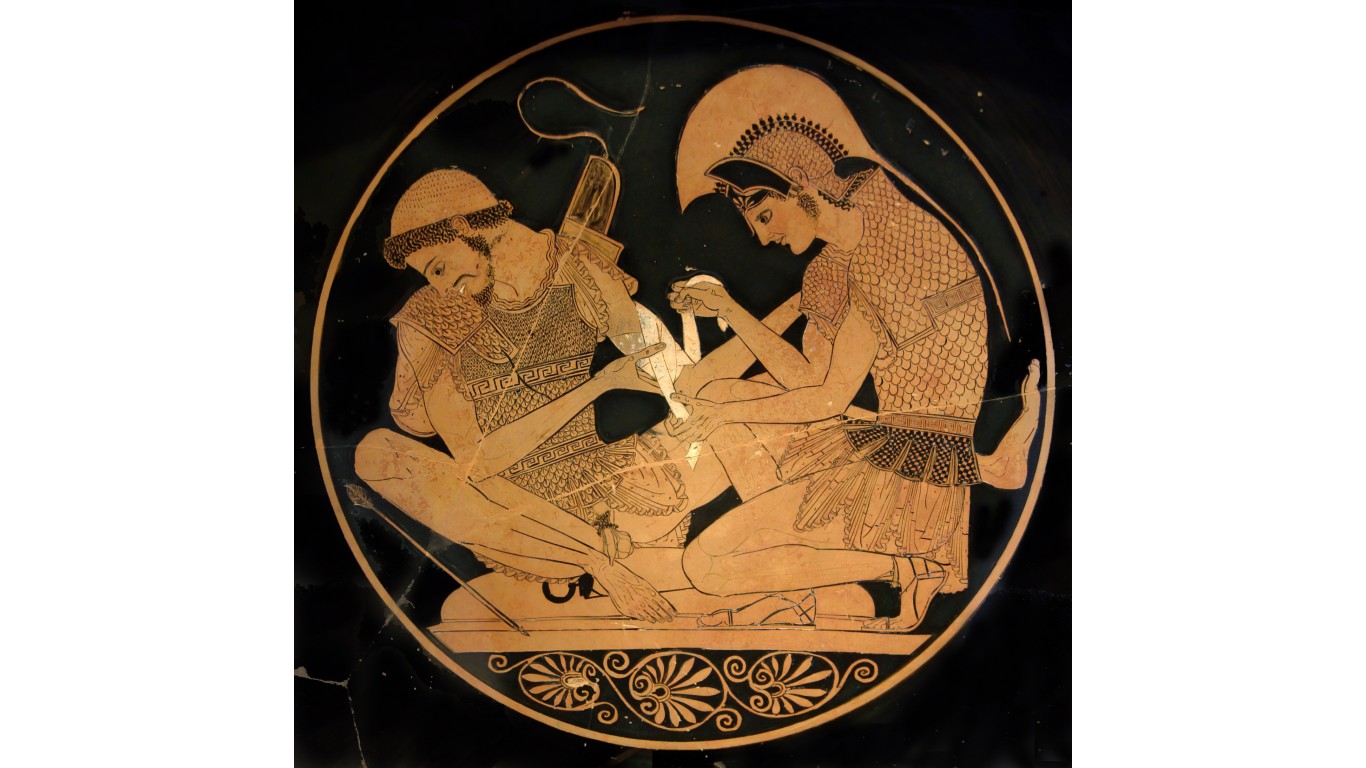
9. Siege of Troy
> Length of siege: 10 years
> Dates: 1194 BC to 1184 BC
The siege of Troy plays a prominent role in Homer’s “Illiad,” and is Western Civilization’s first great story about warfare. How much of it is true is open to debate. We do know that Greece and Troy fought a war at the end of the Bronze Age, and that a siege lasted for 10 years, ending in 1184 BC. It is doubtful, however, the Greeks used a hollowed out horse to sneak in soldiers to open the gate and allow the invaders to take the city.
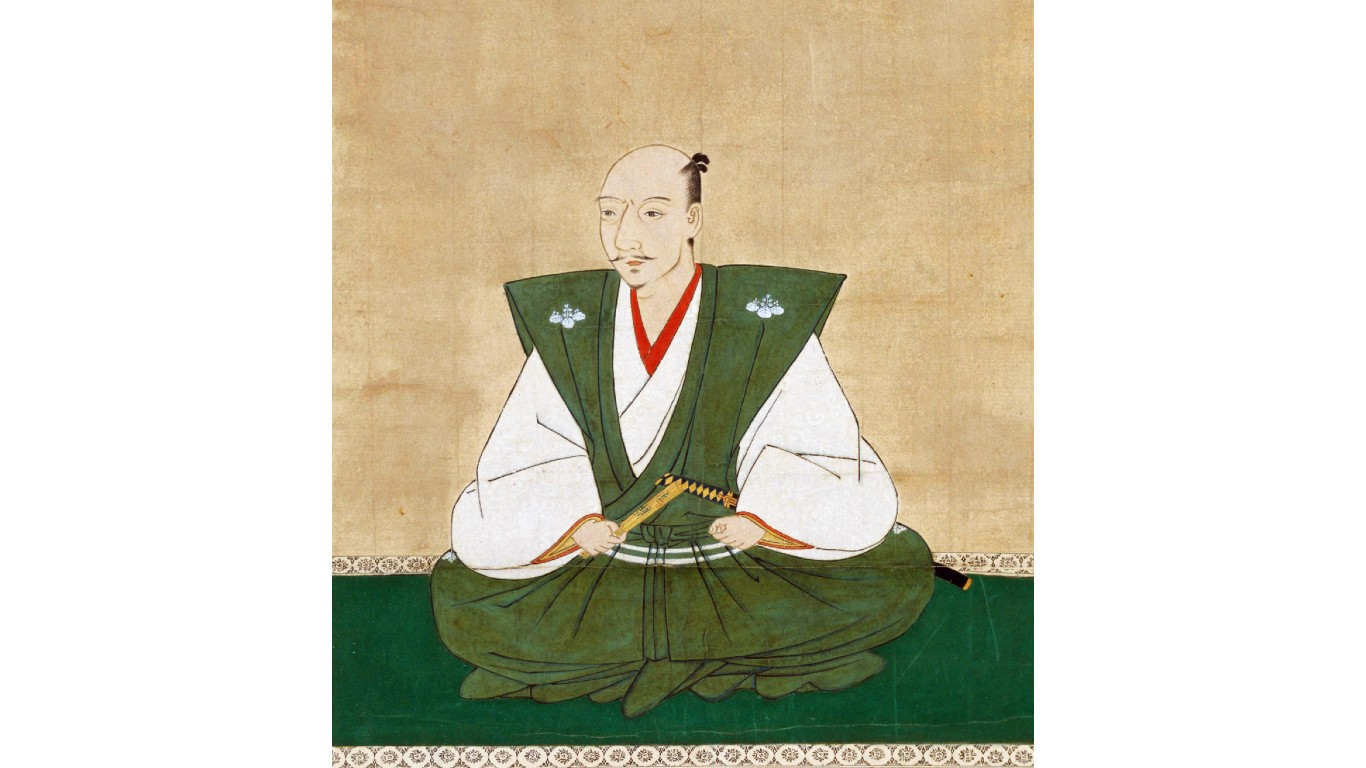
8. Siege of Ishiyama Honganji
> Length of siege: 10 years
> Dates: 1570 to 1580
Guinness World Records calls the siege of Ishiyama Honganji the longest castle siege in history. It was located in what is today Osaka, Japan. It came under attack from famed Japanese warrior king Oda Nobunaga in August 1570. The warrior monks defending the castle opposed the samurai class. They held out for a decade until August 1580, when the complex was finally torched. The site was then reused for Osaka castle.
7. Siege of Đông Quan
> Length of siege: 10 years
> Dates: 1418 to 1428
Vietnamese rebels laid siege to the Ming dynasty city of Đông Quan in the 15th century. The city was under siege every year during the war. The rebels won a series of battles before they were able to take the city. The war ended when Hanoi fell.
[in-text-ad-2]
6. Siege of Philadelphia
> Length of siege: 12 years
> Dates: 1378 to 1390
Philadelphia was the last city in Asia Minor that remained outside direct rule by the Ottoman Empire. The city had evaded capture because it was located in the Lydian hills and was more remote than other cities. Philadelphia also paid tribute to Turks and others pillaging the Anatolian countryside. The Byzantine Empire was basically a vassal state under the Ottoman Empire and had agreed to turn over Philadelphia to the Ottomans. Philadelphia refused to surrender, and the Turks besieged the city. It was only when the co-emperors of the Byzantine Empire were ordered to the city by the Ottomans that the city surrendered in 1390.
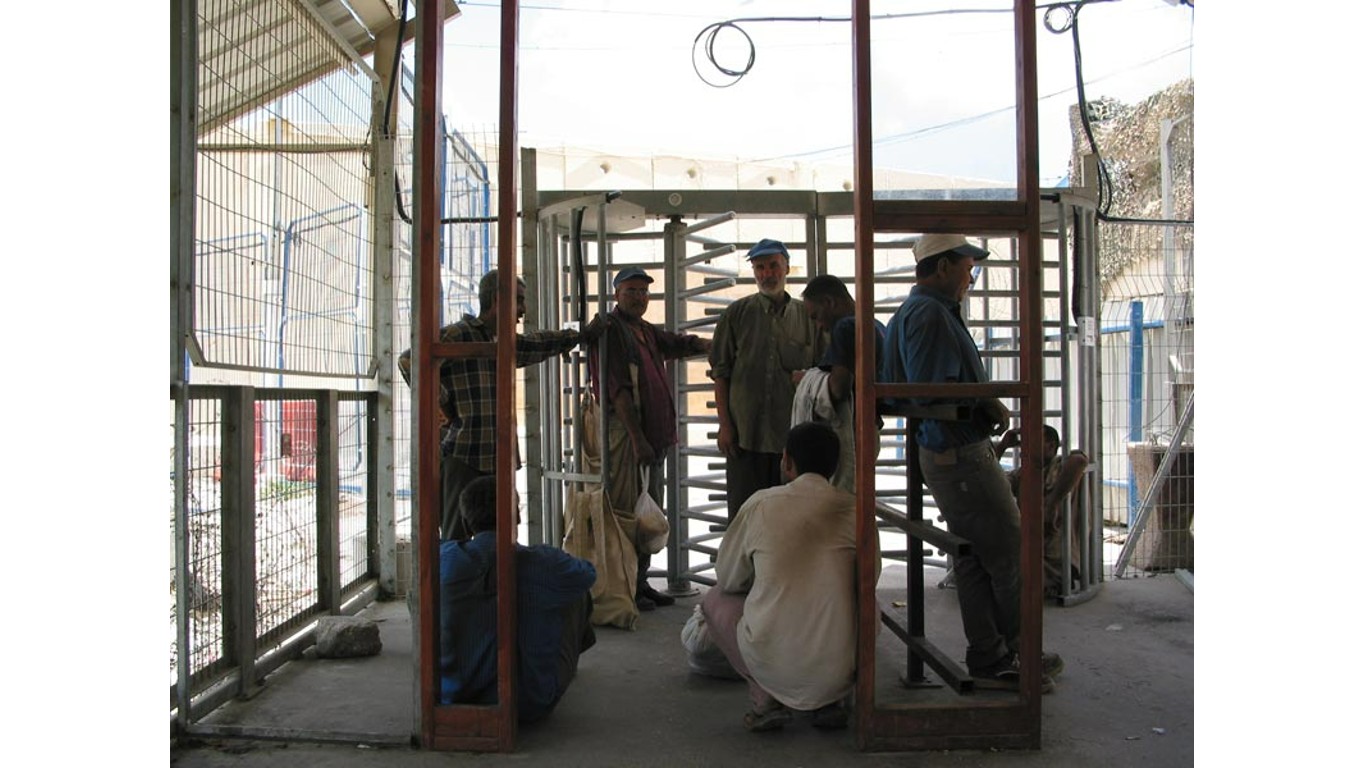
5. Blockade of the Gaza Strip
> Length of siege: 15 years
> Dates: 2007 to present
The Israeli blockade of the Gaza Strip began in June 2007, when Hamas seized control of the territory in 2007 and was in response to years of rocket fire into Israeli civilian settlements. Egypt has largely helped enforce the blockade. Gaza is one of the most densely-populated areas on Earth with 2 million people crowded into 140 square miles. Movement of people in and out of the Gaza Strip happens through the Beit Hanoun crossing with Israel and the Rafah crossing with Egypt. Both Israel and Egypt have kept their borders largely shut. The siege has led to shortages of basic items, like food and fuel.
[in-text-ad]
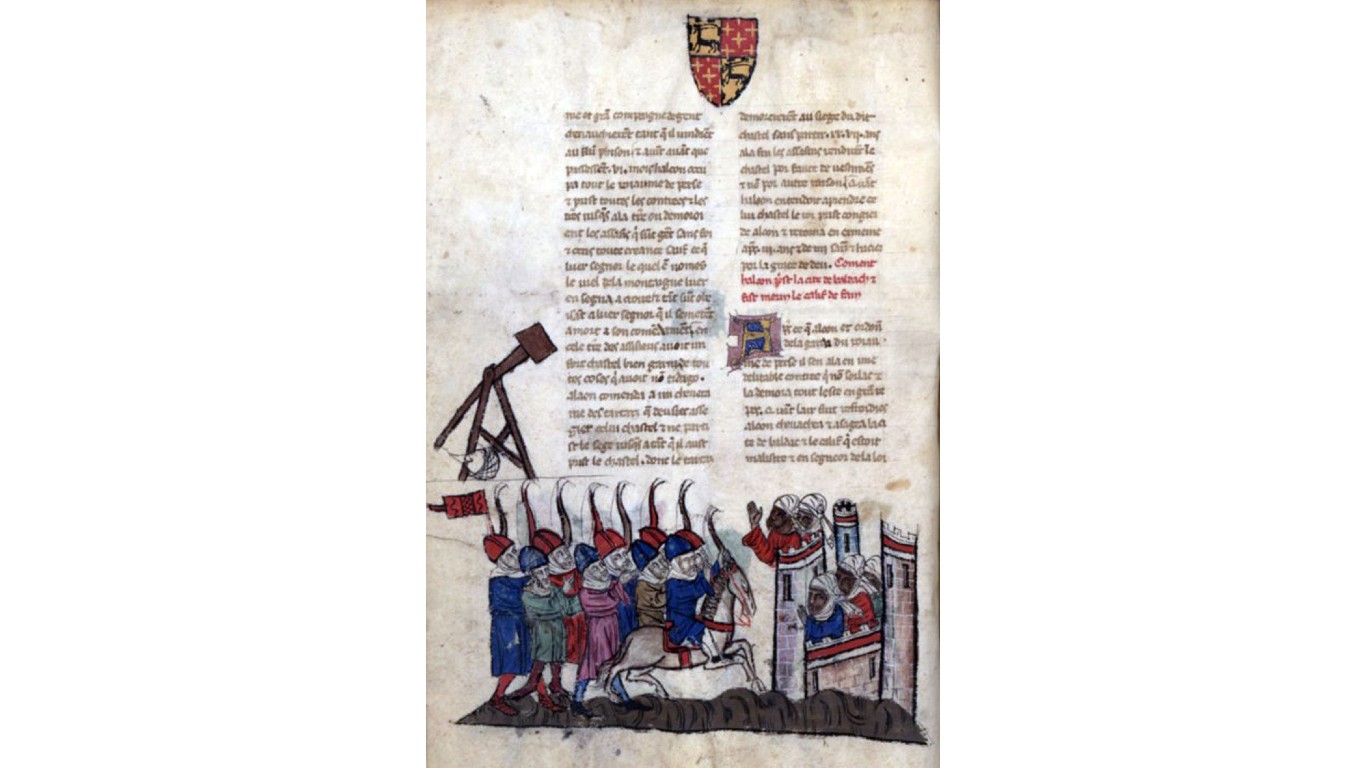
4. Siege of Gerdkuh
> Length of siege: 17 years
> Dates: 1253 to 1270
Gerdkūh is a fortress on the summit of a hill in the Alborz Mountains in Persia (today’s northern Iran). It was a stronghold for a group known as the Nezārī, who exacted tolls from travelers passing through their territory. Gerdkūh became the last Nezārī redoubt in Persia to surrender to the Mongols. The fortress was under siege for 17 years. It capitulated in 1270. Unlike other Nezārī fortresses in Persia, the Mongols did not demolish Gerdkūh, whose fortification ruins can still be seen.

3. Siege of Candia
> Length of siege: 21 years
> Dates: 1648 to 1669
The siege began after some of the Knights of Malta attacked Ottoman ships and fled to Candia, a city in Crete controlled by Venice. The incident sparked a war between the Venetians and the Ottomans. The Turks landed an army on Crete and pillaged the countryside. When they got to Candia, they created a network of siege lines. The Turks assaulted the fortress but could not break through. A French fleet arrived in 1669 to try and lift the siege, but it withdrew when its flagship was destroyed. Candia finally succumbed to the inevitable in September 1669, 21 years and four months after the siege began.
An interesting footnote to this siege is it might be one of the earliest recorded episodes of the use of germ warfare. The Venetians planned to attack the Ottomans with a serum extracted from the organs of plague victims. The Venetians hoped this would weaken the Ottoman forces enough to get them to lift the siege. The plan was uncovered by researchers in 2015, though there is no evidence it was carried out

2. Siege of Azotus
> Length of siege: 29 years
> Dates: 659 BC to 630 BC
The second-longest recorded siege was that of Azotus, now Ashdod on the coast of present-day Israel, which according to the ancient historian Herodotus was besieged by Psamtik I of Egypt for 29 years.
[in-text-ad-2]

1. Siege of Ceuta
> Length of siege: 33 years
> Dates: 1694 to 1727
Ceuta, on the North African coast is a Spanish enclave today. It has been fought over many times because of its strategic position on the Mediterranean Sea and Atlantic Ocean. It was the object of what became known as the Thirty-Year Siege in the late 17th and early 18th centuries. The siege occurred when Moroccan Moors fought with the Spanish.
The first military blockade on Ceuta began in October 1694. The Moors were ready for a prolonged siege. They constructed siege weapons and planted crops in the surrounding lands. Parts of the city switched possession over the next 30 years. In 1720, 16,000 soldiers under the leadership of the Marquis of Lede, a Belgian serving the Spanish crown, arrived and drove off Moroccan forces. Lede did not pursue the Moors because of an outbreak of plague. The Moroccans returned and conquered Ceuta.
Are You Still Paying With a Debit Card?
The average American spends $17,274 on debit cards a year, and it’s a HUGE mistake. First, debit cards don’t have the same fraud protections as credit cards. Once your money is gone, it’s gone. But more importantly you can actually get something back from this spending every time you swipe.
Issuers are handing out wild bonuses right now. With some you can earn up to 5% back on every purchase. That’s like getting a 5% discount on everything you buy!
Our top pick is kind of hard to imagine. Not only does it pay up to 5% back, it also includes a $200 cash back reward in the first six months, a 0% intro APR, and…. $0 annual fee. It’s quite literally free money for any one that uses a card regularly. Click here to learn more!
Flywheel Publishing has partnered with CardRatings to provide coverage of credit card products. Flywheel Publishing and CardRatings may receive a commission from card issuers.
Thank you for reading! Have some feedback for us?
Contact the 24/7 Wall St. editorial team.
